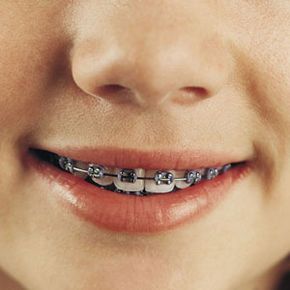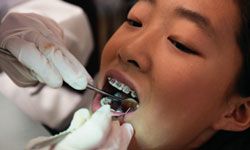Invented by the ancient Greeks, orthodontic braces are used to correct crooked teeth or a misaligned bite by applying continuous pressure over time to slowly move teeth in a specific direction. While methods have advanced in the centuries since Aristotle and Alexander the Great, the basic idea remains the same: With the right contraption, teeth can be forced into proper place. Currently, the two most common types of braces are traditional brackets (steel, ceramic or plastic braces bonded to the front of each tooth and connected by wires and elastic bands) and lingual brackets, which are attached to the back of the teeth [source: AAO], Medicine Net.
While the teeth-straightening process is a long, costly and often uncomfortable one, people are going to their orthodontists in droves in a quest to get the perfectly shaped grin. Everybody's doing it, especially the kids. In North America, roughly 4 million people younger than 18 are wearing braces, and four out of every five people in braces are minors. While most kids get braces between the ages of 11 and 14, the American Association of Orthodontists recommends a checkup with an orthodontist by no later than age 7, when most children still have some of their baby teeth and their adult teeth have begun to come in [sources: AAO, CAO, LA Times].
Advertisement
So what's with the rush to fill the mouths of our youth with hunks of metal? Is it all about aesthetics in straightening crooked smiles, or are there legitimate health reasons for getting braces? Read on to find out.


